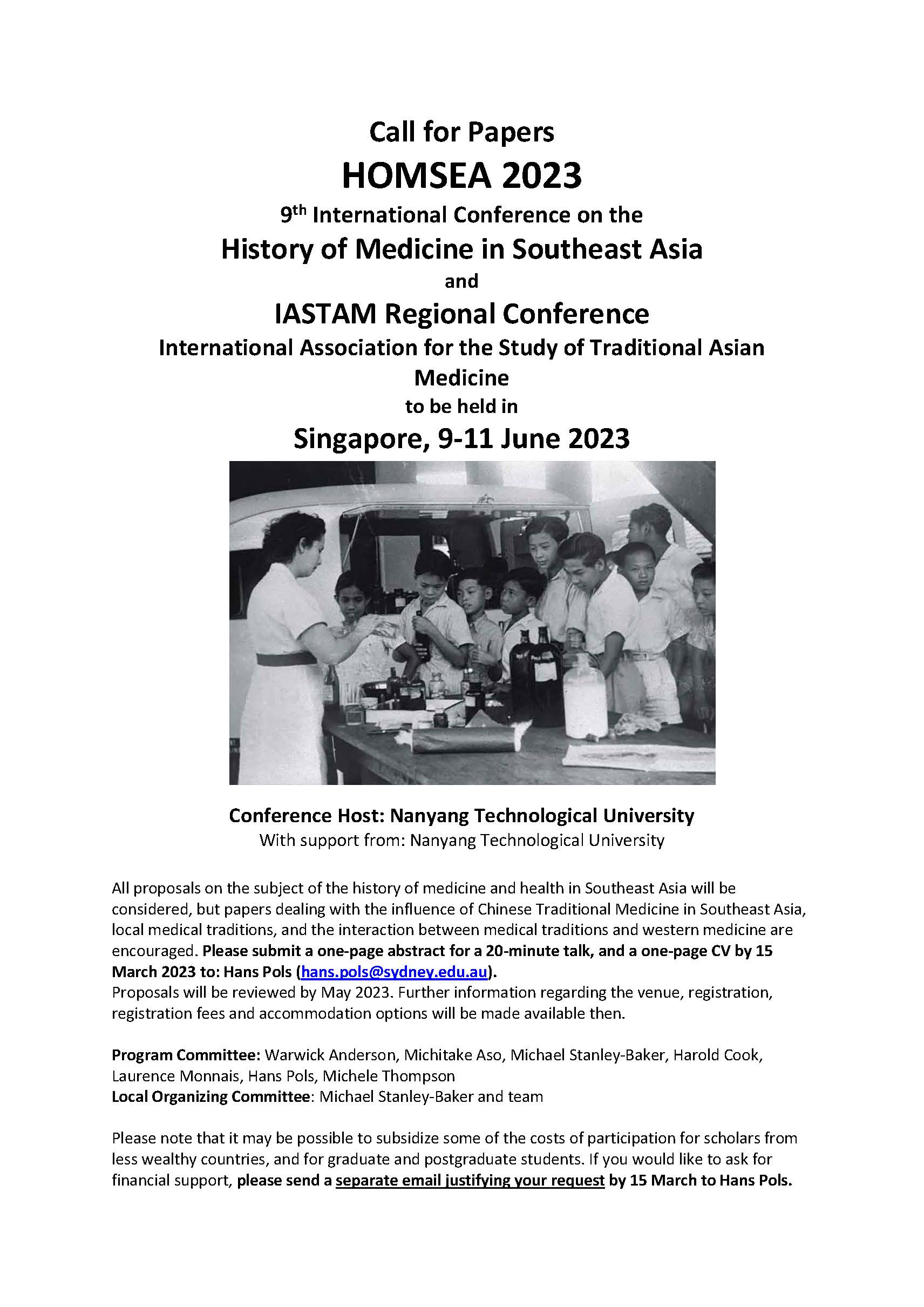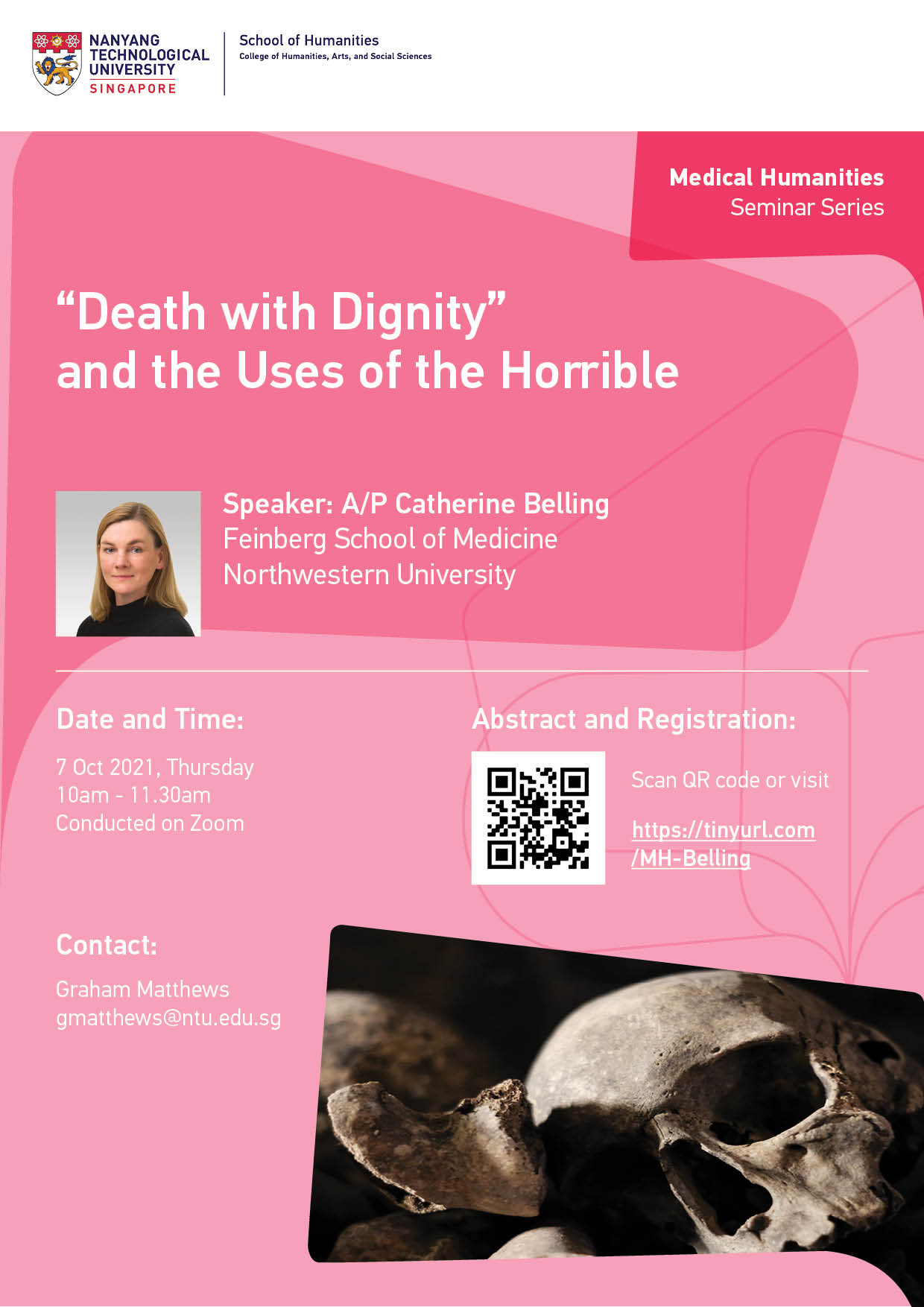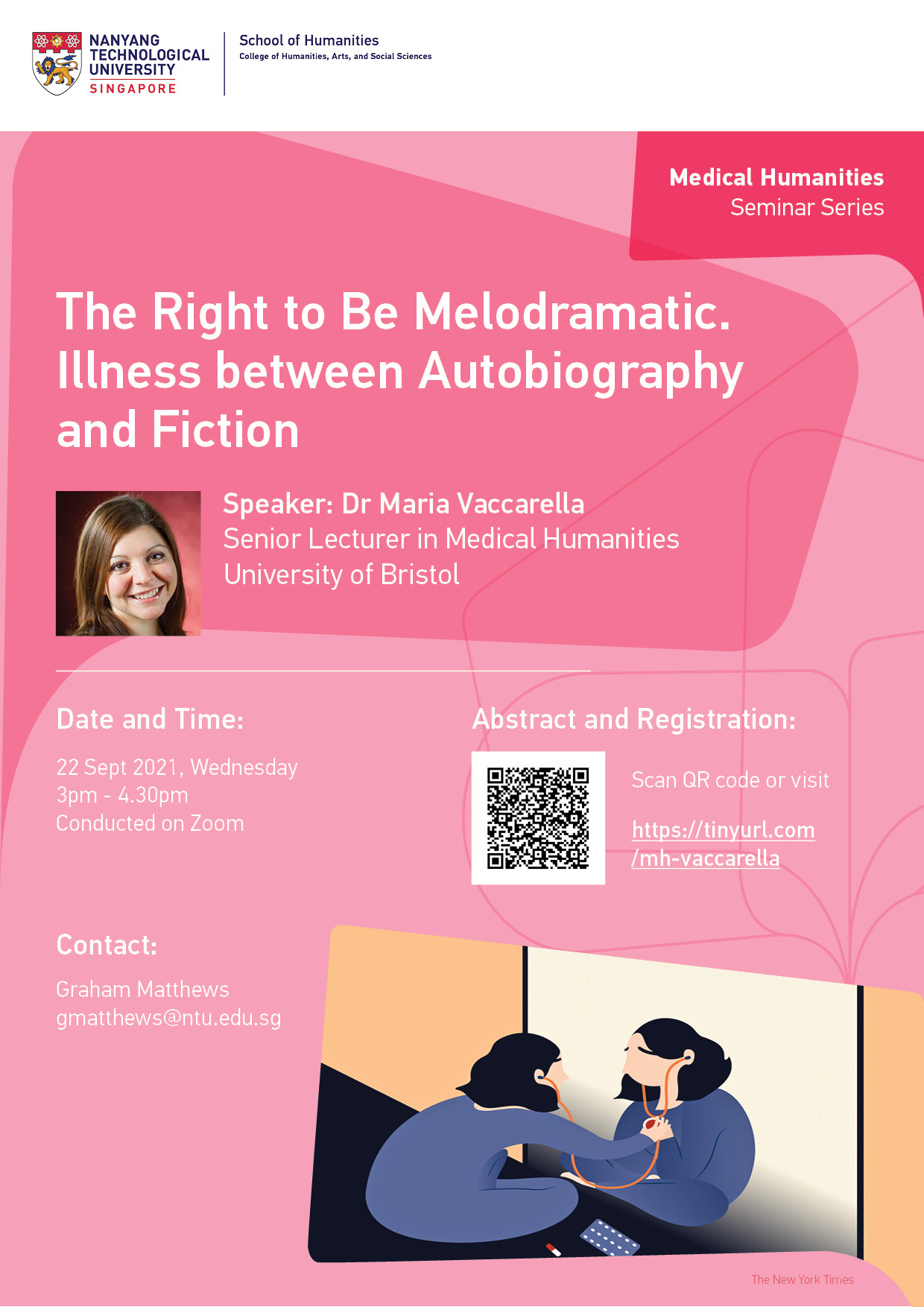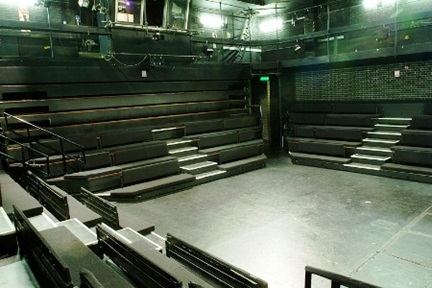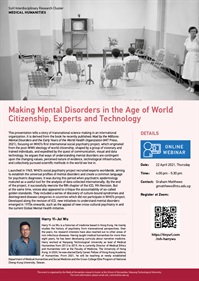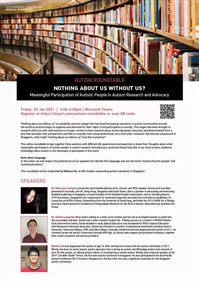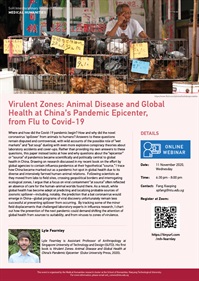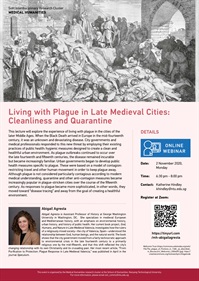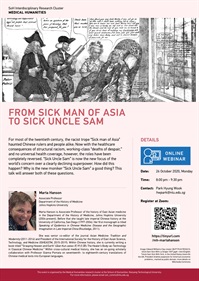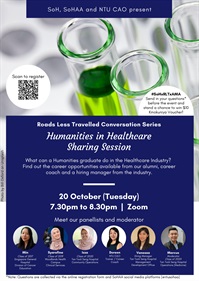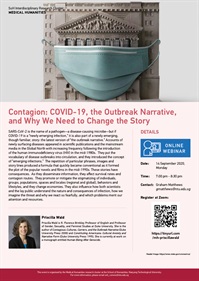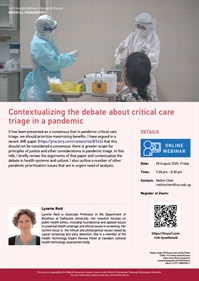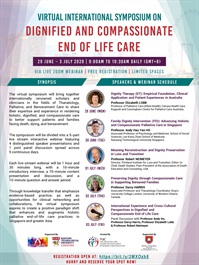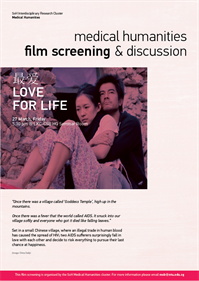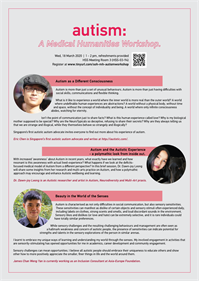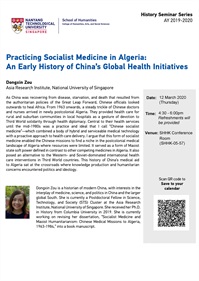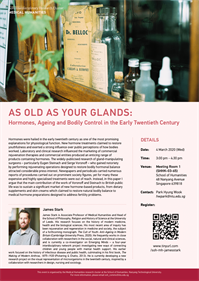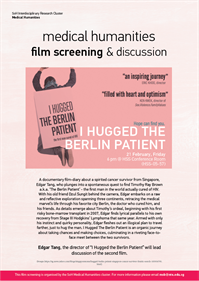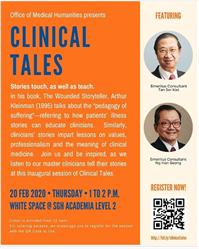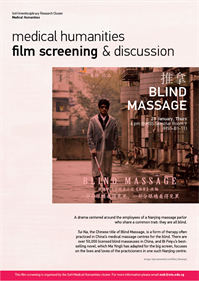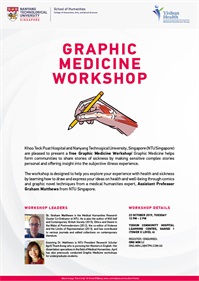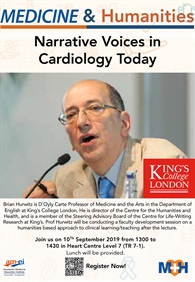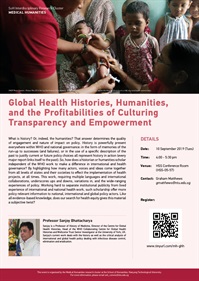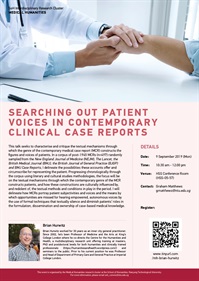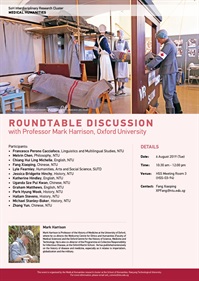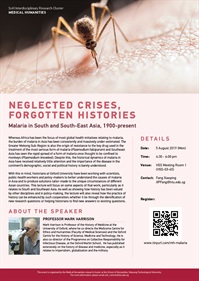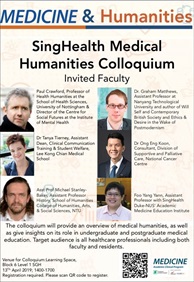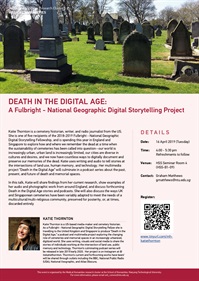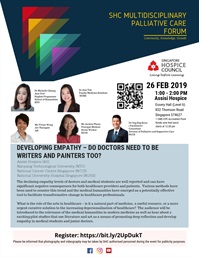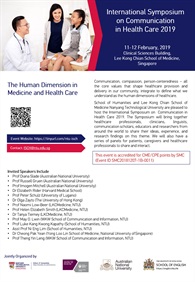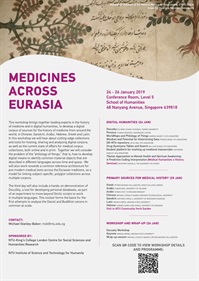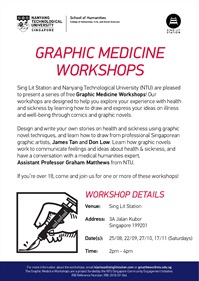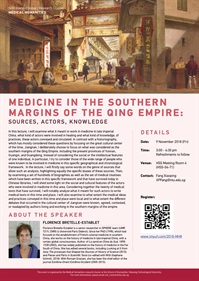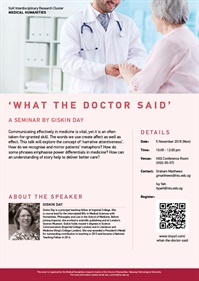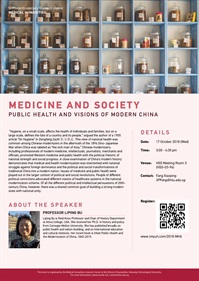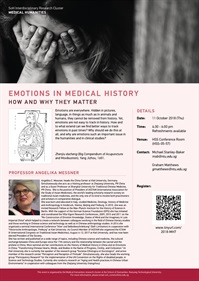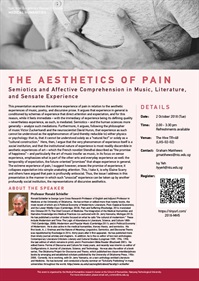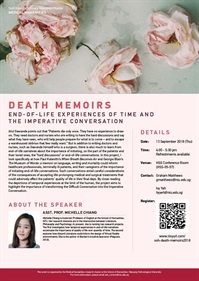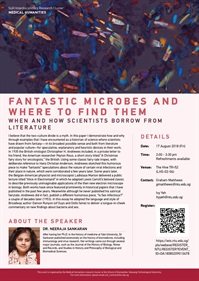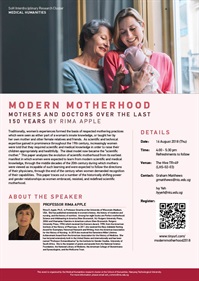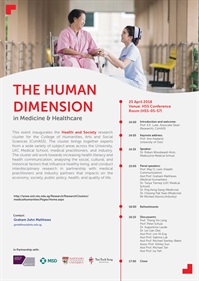Medical Humanities

Pathographies or stories of sickness are personal narratives that describe experiences of illness, treatment, and sometimes death. They offer the opportunity to understand and analyse the impact of socio-cultural factors (age, ethnicity, gender, sexuality, religion, etc) on conceptions of health and sickness.
Shows how societies have changed in their approach to health, sickness and disease from ancient times to the present. Our cluster specialises in the Asian contexts of medicine with research projects on the Silk Road, the spread of medicine in China, and hospitals in South Korea.
Assessing the Quality of Telemedicine: A Social Interactional Investigation of Tele-Advance Care Planning Consultations in Singapore
Lim Ni Eng and KK Luke
Telemedicine, defined by the US-CDC as “the use of telecommunication and information technology to provide clinical health care from a distance,” has been available for a long time but its uptake was generally slow before Covid-19 (Almathami et al., 2020; Ekeland et al., 2010; Schumm et al., 2020; Sinha et al., 2020). According to a WHO survey, only 57% of countries had a dedicated national telehealth policy in 2016. Since the coronavirus outbreak of 2019, however, telemedicine has taken a dramatic turn towards a “springboard trajectory” (Bhaskar et al., 2020: 11). Demand and use of tele-consults have increased multiple times in many countries (Dewar et al, 2020; Grossman et al., 2020; Mann et al., 2020), and Singapore is no exception.
The aim of this research is to assess the effectiveness of telemedicine which is being adopted more and more widely within Singapore, particularly since the Covid-19 outbreak, as an alternative to traditional face-to-face consultations. We propose to do this through an empirical study of a particular kind of consultation, namely, Advance Care Planning (ACP, for End-of-Life care) sessions for the elderly, due to the multiple challenges that ACP consultations pose for videoconferencing over and above those encountered in other kinds of consultations. Through a close examination and moment-to-moment analysis of a collection of video-recordings of Tele-ACP consultations and by comparing and contrasting them with a sample of face-to-face ACP consultations, we aim to assess the effectiveness of tele-ACPs and to uncover the opportunities and challenges of telemedicine as a new and rapidly growing form of medical consultation in Singapore
Caring at a Distance: Dispassionate Bonds of Community in the Long Eighteenth Century
Peh Li Qi
My book project, Caring at a Distance: Dispassionate Bonds of Community in the Long Eighteenth Century, brings the fields of eighteenth-century science and literature and the history of emotions into conversation with one another to recover an alternative theory of care. Most cultural accounts of care tend to be grounded in forms of care that are immediately recognisable as such. Revolving around analyses of fictional and real-life caretakers who work with young, sick, or disabled individuals, such accounts delineate the complex dynamics that exist between carers and those they care for and how these dynamics in turn affect understandings of society, politics, and government. Such a mode of analysis tends, understandably, to assume that care involves social interaction and emotional exchange. But this is not always the case, and it is not necessarily true that those who render care mechanically are being inauthentic or cruel. Caring at a Distance proposes that contrary to what economist and moral philosopher Adam Smith posits, one can care for others while remaining emotionally distant. We can discern and respond to the needs of those around us, that is, without feeling called to do so. In reimagining the forms that care can take, this project hopes to advance new solutions to caretaker burnout and propose ways of rendering care on a wider and more sustainable scale.
Funded by the Research Rehabilitation Institute of Singapore (RRIS), The Healthcare Worker’s Journey of Stroke Care and Recovery is now completed (2019-2022). 6 key challenges were identified from our transcripts and a Care Continuity Advocate Model (CCAM) was constructed. The next project is The Stroke Survivor’s Journey of Stroke Care and Recovery. The project will interview 50 stroke survivors and their family caregivers, as well as close read Singapore stroke narratives to identify key challenges they faced and construct a model of quality stroke care that will be compared with CCAM to gain a holistic perspective of what quality stroke care in Singapore should look like beyond official guidelines and textbook definitions.
Doctors, Daoists and Demons: Situating Medicine and Religion in Early Imperial China
Michael Stanley-Baker
Endemic Diseases and Their Perception- Cultural Anthropology of Illnesses in Alor Island
Francesco Perono Cacciafoco
This paper reconstructs the etymology of the names of endemic diseases and their perception and interpretation by local people in the context of Abui language and culture. Abui (ISO 639-3: abz; Glottolog: abui1241) is a Papuan language (Trans-New Guinea family, Alor-Pantar sub-family) spoken approximately by 17,000 speakers in the central part of Alor Island, South-East Indonesia, Alor-Pantar archipelago, Timor area. The native name of the language is Abui tangà, literally meaning ‘mountain language’. The Alor-Pantar languages are a family of clearly related Papuan languages spoken on islands of the Alor-Pantar archipelago. Besides eminently linguistic aspects of the naming strategies used by Abui speakers in ‘making’ and (sometimes par-etymologically) explaining the names of local diseases, the paper investigates anthropological elements of the relations between Abui people and local illnesses common in Timor’s area, like resistant malaria, yellow fever, cutaneous Leishmaniasis, Japanese encephalitis, and typhoid fever. In particular, the paper analyzes local beliefs about the origins of these diseases, often connected with the breaking of a taboo or with a ‘curse’ triggered by a ‘criminal act’ (e.g. fruit theft from a private property, specifically from a tree to which a spell has been ‘applied’ by the owner of the land). The paper investigates, therefore, the perception of the illnesses by local people, from the appearance of the first symptoms to their course, and the cause-effect relationship of the onset of the diseases according to local beliefs and traditional Abui medicine. The analysis is developed through a comparative approach focused, mainly, on Papuan and Austronesian aboriginal contexts. This study associates Etymology and Language Documentation with Cultural Anthropology, History of Medicine, and History of Culture.
Lieu, May Yen, and Perono Cacciafoco, Francesco. (2021). A Study of Abui: Building an Abui Botanical Corpus and Examining Abui Culture through Its Folktales. Annals of the University of Craiova: Series Philology, Linguistics / Analele Universității Din Craiova: Seria Ştiințe Filologice, Linguistică, 43, 1 / 2: 159-179.
Healing Plants and Their Cultural Meaning: An Intangible Heritage between Linguistics and History of Medicine
Francesco Perono Cacciafoco
We are intensively cooperating with the University of Hawaii at Manoa (A.L. Blake) and with the Palacky University at Olomuc, Czech Republic (Frantisek Kratochvil), sharing data, double-checking them, including fieldwork reports, expanding considerably the database, and aiming at including new Papuan languages of the Alor-Pantar language family and archipelago, like Sawila.
Publications:
Lim, Tyan Gin Shaun, and Perono Cacciafoco, Francesco. [December 2020]. Plants and Place Names: A Case Study of Abui Toponymy. Review of Historical Geography and Toponomastics, 15, 29-30.
Further details: https://blogs.ntu.edu.sg/abui/
Interdisciplinary Story as End-of-Life Healing: Palliative Care Film/Literature
Ian Dixon
Singapore faces a problem: by 2040 our aging population will triple causing a ‘surging demand for palliative care’. Consequently, caregivers should benefit from shared support, which according to Andy Ho, relies on the arts to communicate. As a consequence, we are making a short film and book specifically about Singaporean palliative care. With scholarly input from medicine, psychology, multi-ethnic studies. literature and film, our research envisions a future of story design for practical and theoretical outcomes: film, literature and associated papers.
Significantly, the project provides the groundwork for seeking: 1) larger external grants to make a low-budget feature film on palliative care and 2) produces caregiver literature for a book-length publication. We envision the book in two parts: first, memoir/fictional stories by caregivers and patients and second; an analysis of patterns. A subsequent sociological approach asks: how can we help people in these situations more? We draw on film trained alumni to help weave the stories of needful EoL patients and families into our screenplay, works of individual literature and the eventual film narrative. Finally, a reflective process allows us to theorise new approaches to this unique and underserviced arena of life for interdisciplinary publication.
Machine Learning for Diabetes Management
Ivy Yeh Hui-Yuan
Medical Artificial Intelligence
Melvin Chen
The secret of the care of a patient, as Peabody (1927) well knew with respect to the humanistic ideal of his medical profession, is in caring for the patient. Current medical practice, however, suggests an industry misaligned with this ideal and in disarray. The shift from private practice to hospital practice has given rise to a progressive dehumanization in the practice of medicine. Burnout is on the rise, with more physicians and nurses feeling emotionally exhausted, depersonalized, and ineffective. Can the introduction of medical AI close the quality gap or quality chasm in the medical domain by promoting better disease surveillance, facilitating early detection, allowing for improved diagnoses, and discovering novel treatments (Fogel & Kvedar, 2018)? Might the introduction of medical AI usher in an era of truly personalized medicine, in which healthcare systems are able to match individual patient characteristics with detailed evidence available in real time at the point of care (Abernethy et al, 2010)? At least two fundamental deficits in the design of medical AI systems – the causality deficit and the care deficit – remain to be addressed if this quality gap is to be closed (Chen, 2019).
Dr. Melvin Chen (Philosophy) and Assoc. Prof. Chew Lock Yue (Physics) have successfully completed a medical AI research project funded by the NTU Accelerating Creativity & Excellence grant. A paper, co-written with gastroenterologists and medical experts from NUH (Singapore), SGH (Singapore), and Queen Mary Hospital (Hong Kong), has been published in The Lancet Regional Health-Western Pacific (Tan et al, 2021). In this paper, continuous time Markov chains were used to model the effects of various COVID-19- induced liver transplant restrictions on the healthcare outcomes of patients on the liver transplant waitlist. Dr. Chen and Assoc. Prof. Chew have since been joined by Dr. Sourav Sen Gupta (Computer Science) and they are working with their NTU collaborators on developing machine learning-based approaches that are able to offer alternatives to the traditional MELD (Model for End-stage Liver Disease) score, with the aim of promoting more equitable healthcare outcomes.
Motivations behind seeking religious and spiritual support and their impact on health and social outcomes for PLHIV in Singapore
Ritu Jain
Existing literature on religion and HIV identified that people living with HIV (PLHIV) who have a religious or spiritual affiliation believe faith helps with coping with illness and finding a renewed sense of purpose in life. Religion is also used to overcome their sense of guilt and shame in engaging in risky behaviors. However, there is no existing study on religion and HIV in Singapore, much less a study on religion as a resource for treatment or support in clinical interventions for PLHIV.
Semi-structured qualitative interviews were conducted with a total of 73 participants. These included 56 PLHIV (30 men who have sex with men, 23 heterosexual men, 3 women) and 17 stakeholders including healthcare workers, contact tracers, religious leaders, social workers, and volunteers. Interviews focused on both PLHIV and stakeholders’ perspectives or experiences of HIV diagnosis, navigating healthcare, attitudes towards HIV, and impact of HIV on relationships. Data were analysed through inductive thematic analysis.
Out of the 56 PLHIV participants, 40 reported having a religious or spiritual affiliation with varying degrees of practice. Participants report that their faith communities are not directly involved with HIV/AIDS treatment, support, or resource provision. Instead, participants turn to religion to cope with their illness through practice (prayer, reflection, etc) and support-seeking. Our analysis revealed that those who practice Abrahamic religions (Islam, Christianity, Catholicism) are more inclined seek support from their community members, while those of non-Abrahamic faiths (Buddhism, Taoism, Hinduism) seek spiritual support from their practice. Our analysis of both groups reveals that PLHIV are reluctant to disclose their HIV-status to members from their faiths, not because their religions, religious leaders, or fellow practitioners condemn HIV/AIDS, but because of existing prejudices against homosexuality, promiscuity, and infidelity in their religions. This indicates that cultural stigmas are being reproduced in religious groups in Singapore, as well as conflated with HIV/AIDS by our religious participants.
This paper delineates the complex motivations of religious or spiritual practice in PLHIV. Understanding the differences between practitioners of Abrahamic and non-Abrahamic faiths is paramount to conceiving of religion or spirituality as a resource for treatment or support in clinical interventions. Further, understanding how cultural stigmas are reproduced in religious settings illuminates barriers to health and social outcomes for PLHIV, which include a reluctance to seek support from social groups due to a fear of discrimination.
Textual Magic (forthcoming from Chicago University Press) explores the medieval belief that spoken and written words, in the form of medical charms and healing amulets, could physically change the world. The project draws on extensive manuscript research, resulting in a database of over a thousand charms copied in medieval England between the eighth and fifteenth centuries. This corpus-based approach overturns earlier assumptions about the use of charms in medieval England: for example, where previous scholars have found a hiatus in the copying of charms during the twelfth and thirteenth centuries, I have found a rich and flourishing tradition. This project highlights compelling relationships between medicine, materiality, and language to demonstrate that charm texts were seen as relics, as medical ingredients, and as divine messages. Thanks to a Tier One grant from Singapore's Ministry of Education, the texts on which this research is based will be made available as a public online database.
The Emerging Sociology of Wastewater Surveillance
Dhiraj Kumar Mohan Nainani
The aim of this project is to interrogate the jurimorphosis – or the constantly shifting legal materiality – of wastewater surveillance. In essence, I look at how the many non-legal actors, objects, and spaces that make up the vast infrastructural assemblage of wastewater surveillance influence (and are influenced by) the passage of law, through constant and overlapping transformations.
This is studied through three key lines of enquiry. The first involves looking at the legal history and geography of environmental surveillance in the Asian context by studying the spatio-legal regulation of disease in Singapore, and the role environmental surveillance has played in its epidemiological history. The second concerns the construction of a possible framework for a ‘more-than-human’ ethics (or rights, or even obligations) of surveillance in the post-pandemic Anthropocene. The final investigative dimension of the project involves an ethnographic study of the materiality of wastewater surveillance – from pipeline to laboratory – in order to understand what makes an assay ‘ripe for use’.
- Michael Stanley-Baker (Principal Investigator)
- Faizah binte Zakaria (Co-investigator)
- Francesco Perono Cacciafoco
Medicines circulate across languages, regions and communities, forming cultural bridges and revealing how materials and knowledge circulate. What can the study of medicine teach us about cultural exchange, identity-formation and the transmission of knowledge?
This project, funded by the National Heritage Board of Singapore, will build foundational digital tools to enable the cross-cultural study of the history of medicine in maritime Southeast Asia. These consist of a searchable digital text repository and digital drug term synonymy which will help identify and track medicinal products across different languages. Using these tools, we will compare the use of medical materials across three languages: Malay, Chinese and Abui. We will develop a repository of digitized and searchable Malay medical manuscripts, Chinese late imperial medical works and local Peranakan family manuscripts. We will also bring the past into dialogue with the traditions of the present, by hosting oral interviews about the use of medicinal products among Malay, Chinese and Abui speaking communities. This project will also allow scholars to publish further ethnobotanical data, and incorporate it into a comparative framework.
The digital synonymy will enable us to correlate terms across the three languages, and bring historical and contemporary texts into correlation, allowing us to study the degree to which traditional medicines – long considered to be culturally and linguistically enclosed– were built from a history of contact, borrowings and adaptation. We refer to these fluid modalities of healing as “polyglot medicine” and tentatively argue that being polyglot is a hallmark of medical traditions among the diverse communities living in maritime Southeast Asia.
Image Credit: Lin Henghan –Huayü tonghua 华夷通, 1883
Risk compensation in monogamy and testing: illusions of safety in ABCD-premised HIV prevention communication strategies
Ritu Jain
‘Abstinence, Being faithful, Condom usage, and Detection’ or ABCD have been considered pillars of behavioural intervention for self-protection and prevention of HIV transmission in Singapore. However, the approach has been rolled out uncritically and lacks sufficient attention to the interpretation and practice of each of these tenets among vulnerable populations. This study examines the continued relevance and impact of these principles in empowering individuals in HIV prevention.
Semi-structured qualitative interviews were conducted with a total of 76 participants. These included 56 people living with HIV (PLHIV) of whom 30 were men who have sex with men and 26 were heterosexual men. The remaining 17 comprised healthcare professionals and allied workers. Interviews focused on participants’ knowledge of HIV, HIV prevention practices, and sexual behaviour pre-diagnosis. Using an inductive approach data were thematically analysed.
While adherence to ABCD either collectively or in combination is the theoretical gold standard for the prevention of HIV, in practice, singular individual tenets (B, monogamy alone; or D, only frequent testing) are misinterpreted as being sufficient for HIV prevention. Specifically, interview data reveal two forms of risk compensation when adhering to certain tenets: testing as a panacea and monogamy as sufficient self-protection against HIV. Among participants, frequent testing was equated with safety and in fact, emboldened a continuation of sexual risk behaviours. While necessary for controlling transmission and accessing treatment, testing is insufficient for (self) protection from infection. Similarly, participants maintained a misconception that one’s practice of monogamy is sufficient protection from infection. Interviewees often presumed condom use was unnecessary for self-protection in stable relationships and felt no need to ascertain their partners’ HIV status.
Both practices of monogamy and frequent testing are necessary to reduce the risk of HIV transmission. However, poor communications around prevention messaging may lead to risk compensation in the context of ABCD-premised prevention communication strategies. Policymakers and sexual healthcare providers should focus on clarifying such messaging and emphasise empowering individuals with a combination of prevention methods. This is especially important given that novel HIV prevention modalities such as pre-exposure prophylaxis have yet to scale up in many settings, including Singapore.
Routledge Handbook of Chinese Medicine
Edited by Michael Stanley-Baker (NTU), Vivienne Lo (University College, London)
This handbook aims to showcase the latest research on medicine in China as it has developed over 3,000 years. It will identify themes concerned with both history and culture and the significance of Chinese medicine in the modern world, and invite established experts together with some of the most exciting and innovative younger researchers to respond. China will be understood as an open empire,receptive to all the in-coming influences of religion, materia medica and dietetica , and techniques that have shaped its healing traditions; and also exerting influence through the land, maritime, air and cyber networks that have connected it with other places. To avoid the pitfalls of representing Chinese medicine as a monolithic tradition, detailed attention will be paid to the social and cultural contexts within which a classical medicine emerged, as well as to the realities of everyday practice, to the extent that they can be known. The themes of the book will be traced historically through the healing traditions of Early China, medieval religious institutions, the transmission of knowledge and practice through ritual, writing and authority and the impact of the printing technologies of early modern China. The Ming period, in particular, provides a wealth of exquisitely illustrated medical works which demonstrate the eclectic healing environment. The Handbook will end with two sections on the significance of Chinese medicine in the modern world addressing issues of evidence and, most significantly, an analysis of the global impact of everyday Chinese attitudes to health. It will draw out the complex and paradoxical role of Chinese medicine in the construction of modern Chinese nation as well as its adoption as a strategy of resistance to the perception of an all powerful biomedicine in the Euro-American sphere.
Spaces of Biomedicine in East Asia
Hallam Stevens
Laboratory studies has been a critical aspect of science & technology studies and anthropology of science since the publication of Latour and Woolgar’s Laboratory Life (1979). This project is a multi-sited ethnography of labs and other
biomedical spaces in Southeast and East Asia, but attempts to push laboratory studies in some new (methodological) directions.
First, it draws on the field of performance studies as a resource for understanding scientific life and its various enactments. This project is based on a collaboration with performance studies scholar Eddie Paterson (University of Melbourne). Using concepts such as “dramaturgy” as well as paying attention to “theatrical” elements in science, such as costume and movement, we hope to add new dimensions to the understanding of lives in (and around) laboratories.
Second, and as part of this attention to the broader context in which science takes place, this project is especially interested in the urban settings within which laboratories exist. What is the relationship between labs and geographic spaces around them? How do they influence cities socially and culturally? How does this affect the science that goes on inside them? Here we hope to bring laboratory studies into dialogue with urban studies.
We conducted fieldwork in Singapore and at BGI in Shenzhen and Hong Kong. A short piece we wrote about BGI was published in the Life Sciences Foundation Magazine Winter 2015 issue. A longer piece about BGI was published here.
This project was sponsored by a Tier 1 grant from the Ministry of Education, Singapore.
Events
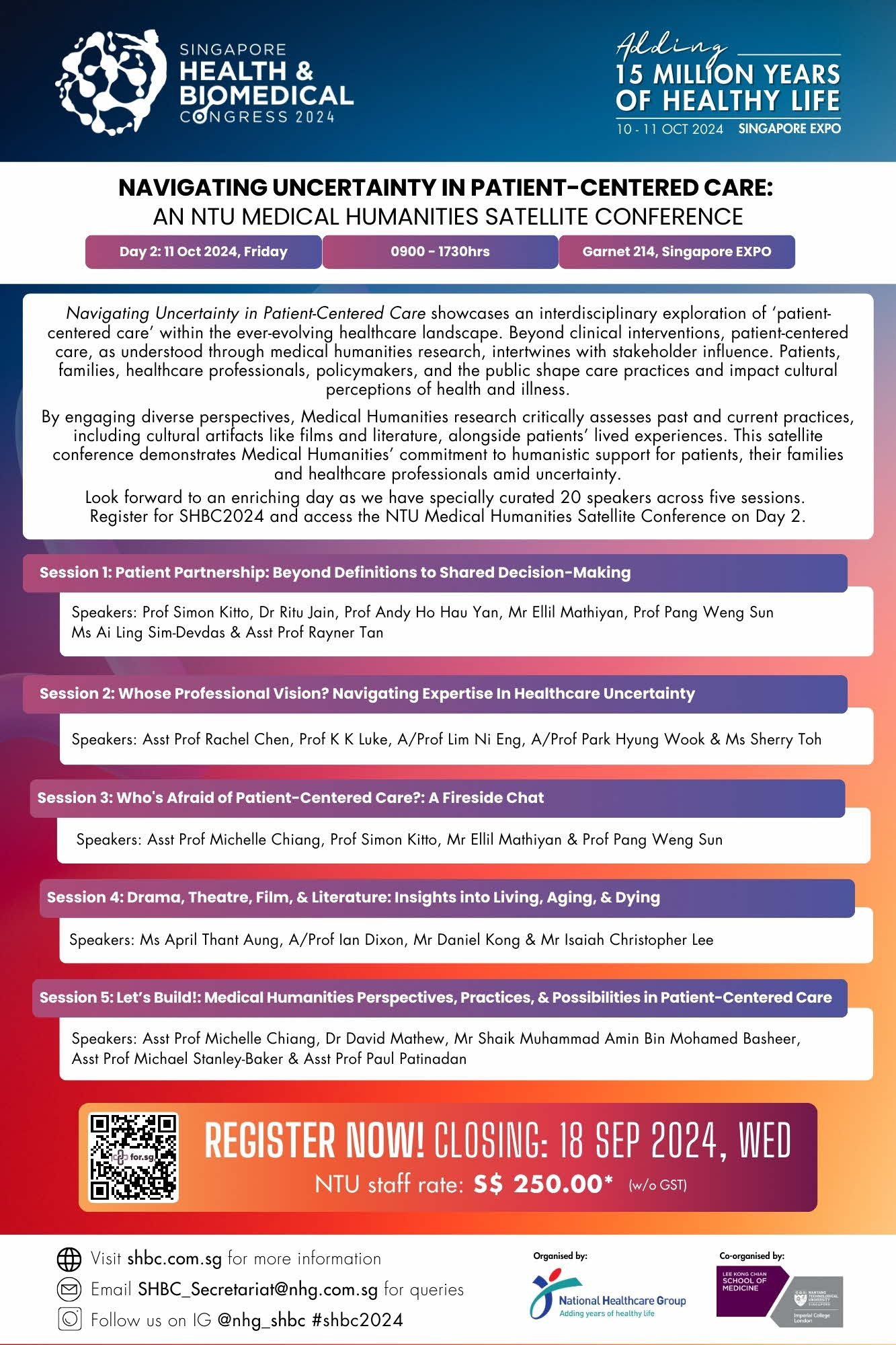


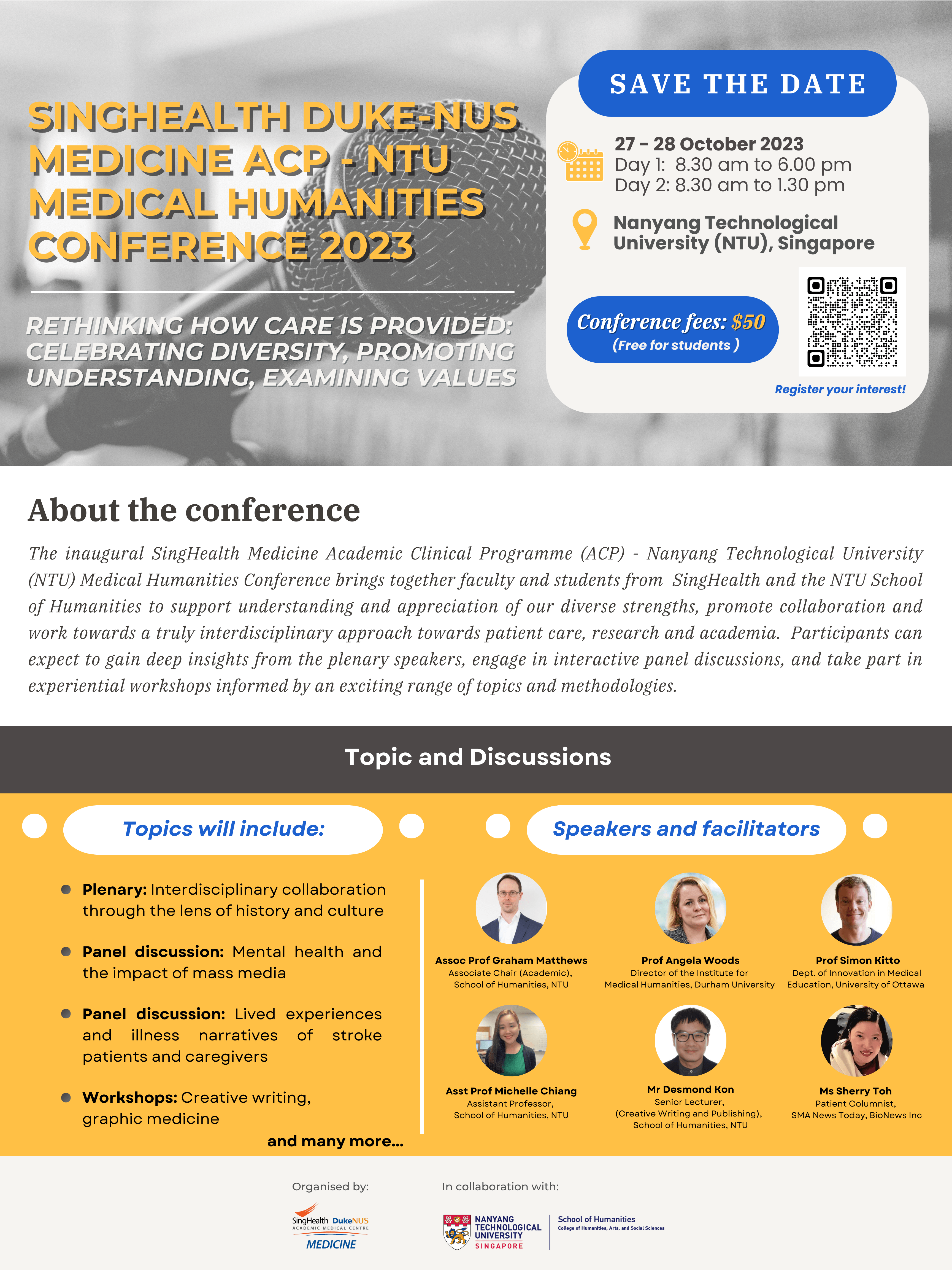
2022
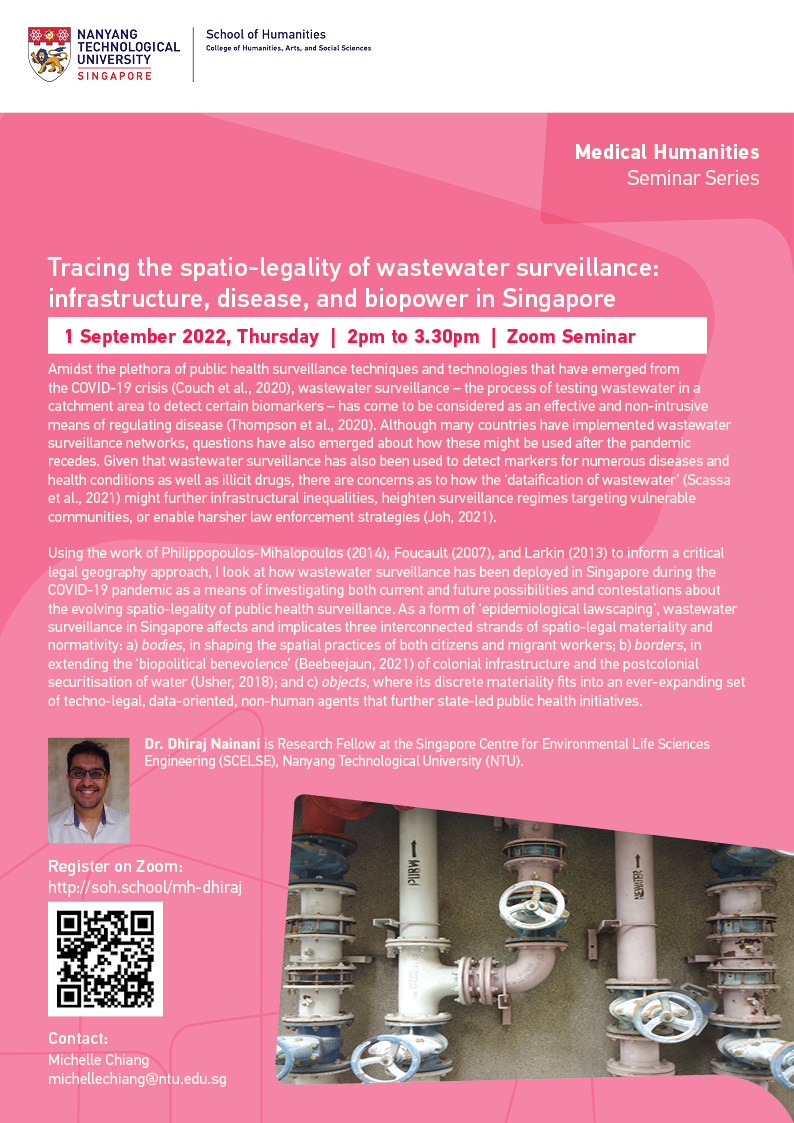
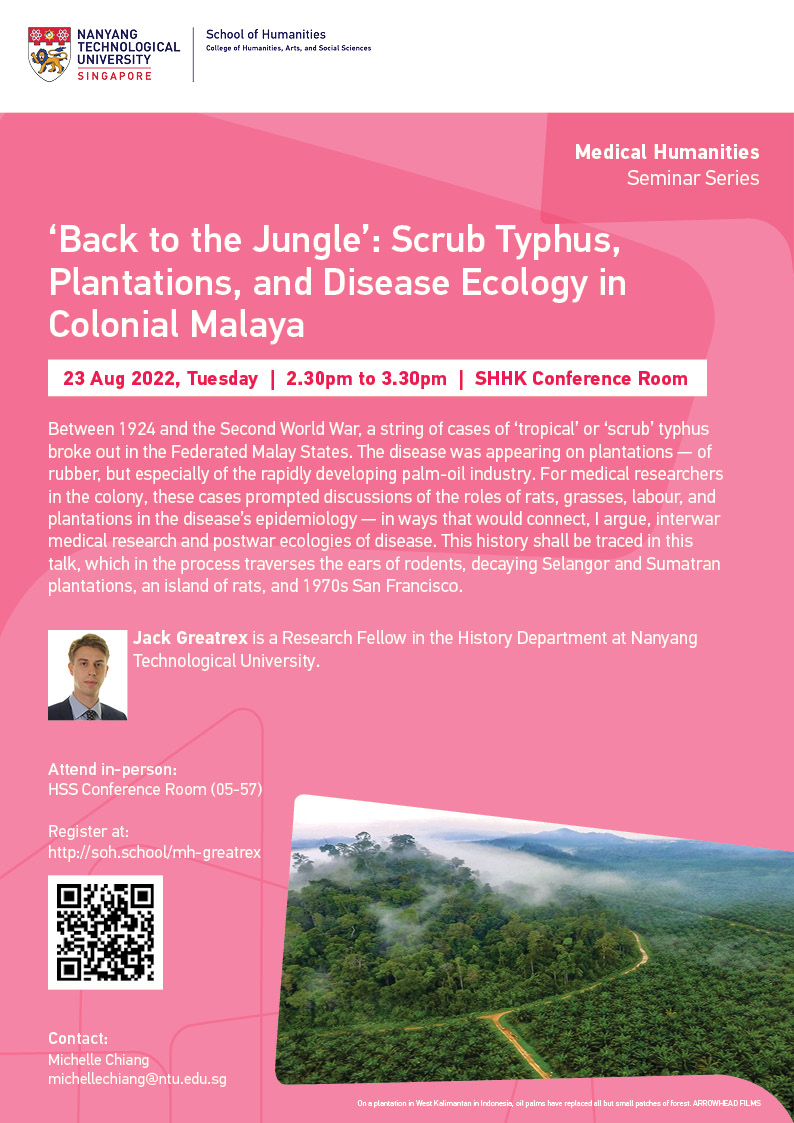
-60.jpg?sfvrsn=dd216d5f_0)
2021
